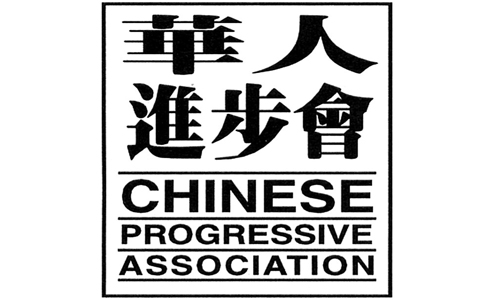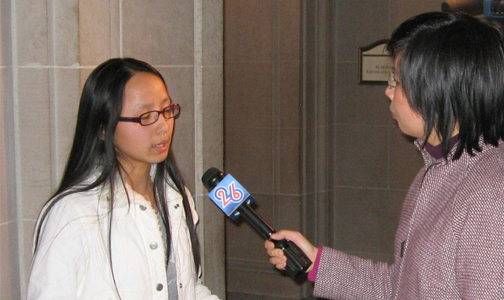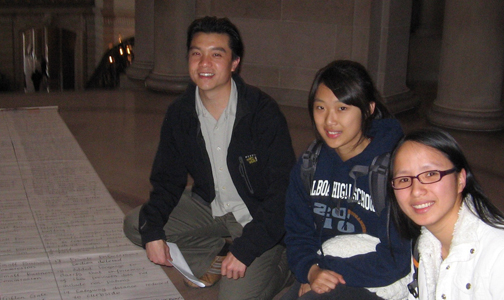- Introduction: What is CPA?The Chinese Progressive Association (CPA) is a grassroots membership-based organization that empowers the Chinese community in the San Francisco Bay Area and promotes justice and equality for all people. CPA’s campaigns and programs improve the living and working conditions of low-income immigrants and give ordinary community members a stronger voice in the decision-making processes that affect them. CPA supports other disenfranchised communities fighting for human rights and self-determination, works for world peace and sustainability, and promotes US/China people’s friendship.Over the years, through a number of programs and initiatives, CPA has placed tobacco issues within the larger framework of promoting healthier living conditions for Chinatown residents. In the mid-1990s, CPA launched Chinese Power Against Tobacco to engage youth in initiatives against the tobacco industry, and won several victories, including the removal of tobacco billboards first from Chinatown and then from the entire city of San Francisco. Chinese Power Against Tobacco has also worked to combat secondhand smoke by getting the city to strengthen its building codes in residential hotels and apartment buildings.
- THE PROBLEM: Need Stronger Protections from Secondhand SmokeA number of public policies have been enacted in San Francisco to protect residents from the hazards resulting from exposure to secondhand smoke. Most of the current policies, however, were enacted up to 14 years ago and loopholes remain. With an increasing body of scientific evidence documenting the health dangers from secondhand smoke, the Tobacco Free Project (TFO) continues to receive complaints from San Francisco residents demanding greater protections through restrictions on smoking in public venues.These venues include outdoor dining areas, ATM, ticket, and event waiting lines, curbs of building entrances, tobacco shops, and common areas in apartment buildings and single-room occupancy hotels.
What the advocates were trying to accomplish
Chinese Power Against Tobacco advocates worked to amend San Francisco’s existing secondhand smoke ordinance to expand health protections.
- THE INTERVENTION MODEL: CPA utilized the Community Action Model (CAM), a process that builds on the strengths or capacity of a community to create change from within and mobilizes community members and agencies to change environmental factors promoting economic and environmental inequalities.
The Community Action Model includes the following steps:
- Train Participants: Community Action Team (CAT) members are recruited and trained to develop skills, increase knowledge and build capacity. The participants will use this knowledge and skills to choose a specific issue or focus and then design and implement an action to address it.
- Do a Community Diagnosis: A community diagnosis is the process of finding the root causes of a community concern or issue and discovering the resources to overcome it.
- Choose an Action: to address the issue of concern. The Action should be: 1) achievable, 2) have the potential for sustainability, and 3) compel a group/agency/organization to change the place they live for the well being of all.
- Develop and Implement an Action Plan: The CAT develops and implements an action plan to achieve their Action which may include an outreach plan, a media advocacy plan, development of a model policy, advocating for a policy, making presentations as well as an evaluation component.
- Enforce and Maintain the Action: After successfully completing the action, the CAT ensures that their efforts will be maintained over the long term and enforced by the appropriate bodies.
- THE STRATEGIES: How CPA adapted the Community Action Model
- Train Participants
CPA recruited nine high school and college-age advocates. Advocates from CPA, along with advocates from other Tobacco Free Project funded projects participated in a 4 hour joint training on July 16 2008. The training covered a variety of topics including tobacco as a social justice issue, the global reach of tobacco, the impact of the tobacco industry on communities of color, and how to effectively implement the Community Action Model (CAM). - Do a Community Diagnosis
Chinese Power Against Tobacco advocates had originally planned to work on a campaign to mobilize Chinatown SRO tenants to adopt a smoke free policy for part of all of the units in the building and to persuade building management to include a non-smoking policy in future lease agreements. The advocates developed and conducted questionnaires and surveys, and compiled the results. While supportive of smokefree units, the survey results showed that SRO residents were much more concerned about smoking in the common areas of their buildings. After further research and talking to allies, the advocates concluded that working to pass smokefree housing unit policies was not a high priority among SRO residents and realized that they lacked the capacity (e.g., the community) to conduct a successful campaign. - Choose an Action
The advocates considered their next steps. The Tobacco Free Project (TFP) suggested the option of becoming involved in the ongoing campaign to close loopholes in the City’s existing secondhand smoke ordinance (which CPA already supported). The SHS ordinance included issues that were important to Chinatown SRO residents, including addressing smoking in common areas. Most importantly, working on the SHS ordinance would be consistent with priorities in the community: the survey conducted by the advocates in Chinatown SROs found that secondhand smoke was one of three problems reported by residents.After discussing this idea with a core group of advocates and leaders, and educating the advocates about the provisions of the ordinance, Chinese Power Against Tobacco decided to work on expanding the SHS ordinance as their main project, and took the lead in getting the ordinance passed. - Develop and Implement an Action Plan
The advocates participated in a Midwest Academy exercise to help identify supervisors who would be targeted for support, worked with TFP to develop a model policy, and created an educational packet. Potentially supportive stakeholders and city policymakers who might be willing to sponsor the policy were identified. The advocates conducted presentations with stakeholder organizations and the community to obtain support and help in approaching targeted supervisors, and prepared and conducted presentations with individual supervisors to explain how the ordinance would improve health protections for San Francisco residents.
The following chart presents the proposed policy to expand SHS protections in San Francisco.
Overview of Proposed Policy to Expand Protections from
Secondhand Smoke Exposure, Sponsored by Supervisor Mar
Venue
Expanded Protections
Dining areas
No smoking where food is served in outdoor dining areas of restaurants, cafes and coffee shops.
Waiting lines
No smoking within designated areas where customers are required to wait to do business including at ATMs, in ticket lines, movie theater lines, athletic event lines, concert event lines and at cab stands.**
Building entrances
Smoking permitted at the curb outside of commercial, multi unit residential, and mixed residential building entrances, exits and operable windows. If there is no curb, no smoking within 15 feet of private commercial, multi unit residential, and mixed residential building entrances, exits and operable windows.
Hotels and Motels
No smoking in lobby areas of tourist lodging facilities such as hotels, motels, youth hostels and bed and breakfast inns; 75% of hotel and motel guest rooms.
Bars and charity bingo games
No smoking in all bars and charity bingo games. Existing bars with Department of Public Health approved applications for owner operated exemptions that are not located in mixed use/residential buildings would be grandfathered in. Smoking will not be permitted in any owner operated bar that opens after the adoption of the ordinance.*
Tobacco shops
No smoking in tobacco shops. Existing tobacco shops will be grandfathered in with the exception of tobacco shops that are located in mixed use/residential buildings.* Farmers Markets
No smoking at all farmers markets. City/County vehicles, taxi cabs, motor vehicles for hire
No smoking permitted inside these vehicles.
A separate ordinance was adopted on December 16, 2008 that amended the SF Health Code to ban smoking in taxicabs and other motor vehicles for hire.
Common areas in apartment buildings & Multi-unit residences such as SROs
No smoking in enclosed common areas of multi-unit residences including common halls, elevators, parking areas, lobbies, waiting areas, bathrooms, cooking, dining, lounge, laundry facilities and recreation areas.
Tenant smoking in their private unit must keep front door of their private unit closed while smoking.
Enforcement and penalties
Criminal penalties deleted; administrative procedures and penalties added.
Business owners not responsible for enforcement of entryway provision with nonpatrons.**
* Changes made to proposed language for these provisions based on meetings with Small Business Commission and small business owners.** Changes made to proposed language for these provisions in response to Golden Gate Restaurant Association. 5. Enforce and Maintain the Action
On March 9, 2010, the San Francisco Board of Supervisors passed, by a 10-0 vote, an ordinance to strengthen regulations against exposure to secondhand smoke. The ordinance prohibits smoking in:-
outdoor restaurant dining areas,
-
enclosed common areas of multi-unit housing,
-
farmers markets,
-
homeless shelters,
-
charity bingo games,
-
service waiting areas, such as lines for ATMs, concerts, movie theaters, sporting events, taxis and bus stop shelters, and
-
within 15 feet of business doorways.
Smoking is still allowed on city streets, in private homes, and in existing bars that have semi-enclosed outdoor smoking areas (state law already prohibits smoking inside bars), and current city law prohibits smoking in city buildings, businesses, schools, hospitals, and public transit.
Enforcement of the new ordinance is expected to be complaint-driven.
- Train Participants
- CHALLENGES: Scheduling meetings with supervisors and working at getting supervisors to attend the meetings was a challenge, particularly when the meeting times kept changing.
It was also challenging getting the 6 advocates together for a meeting, due to limited physical space at CPA to meet with advocates. It is difficult to have meetings in small rooms where other people are working.
Working with youth and adult advocates was another challenge, for several reasons. First, it makes dividing the work unequal because, for example, adults are not always computer literate and some are non-English speaking. Second, in Chinese culture, it is not appropriate for young people to tell older people what to do. Even though the project organizer was experienced working with youth and adult volunteers, there was occasional tension when she needed to give instructions to the older advocates. The project coordinator, who is a little older, has worked with CPA for 9 years, and commands more respect, would sometimes step in and mediate. The older adults were also more used to the PC in that role because she had experience with organizing and administration.
It is challenging to conduct a policy campaign with a non-profit staff and with grassroots volunteer advocates. There are on-going changes/amendments in the proposed legislation that can be difficult for a grassroots base to follow. Ensuring that the voices of grassroots advocates are heard and are a part of the major decisions and negotiations is also complicated. Not is the legislative process structured in a way that politicians will wait for the community. Within a 24-hour period there might be three major changes that the advocates should be informed about, but the logistics involved in bringing people together on short notice can be formidable. “Policy change in this way is somewhat disengaging and disempowering. It’s too hard to keep people involved.” - LESSONS LEARNED: Working with both young people and adults is culturally difficult, but in the process everyone learns a lot from each other, including their differences and how to mediate relationships. For example, the youth helped adults learn computers, including conducting an Excel training to train adults how to input information. In return, adults taught youth how to approach adults when they are doing outreach and knocking on people’s doors. These exchanges greatly helped the relationships between adults and youth.It is important to develop creative ways for grassroots voices to be more deeply connected with a policy campaign, beyond the more superficial role of having community people show up or testify at meetings. Many of the advocates did not speak English very well and had difficulty communicating with Board supervisors. To compensate, the advocates communicated using graphics and symbols. They created a large map of the Bay Area that looked like a jigsaw puzzle and left an empty piece for San Francisco. The point was that the supervisor needed to put that piece on the map, to make the Bay Area more smokefree. The advocates waited for the supervisor outside a committee meeting and circled around him to get his attention. As he examined the map/puzzle, each advocate in turn explained its meaning and what they hoped he would do in response. In this way, the advocates felt they had been able to get some face-to-face time with the supervisor through direct action, and felt more a part of the process.
- Download: case study
Download the case study here.
Comprehensive Smoke-free Policies in Dining, Entryways, and Hallways (2010)
Chinese Progressive Action
San Francisco residents demand greater protections through restrictions on smoking in public venues.


